Our Inspirations
Two years ago, an idea began floating around the Smart-e offices. Inspired by the famous quote from Sir Isaac Newton,* we began to wonder how we as a company could respect those who had come before us. Our solution was a limited series, #OnTheShouldersOfGiants, which documented the lives and work of a number of those inventors, engineers and scientists who have contributed to making out work in the 21st century possible.
The journey of a thousand miles starts with a single step, and while many of those featured here have seemingly little in common with the modern AV industry, all have contributed to the ascent of scientific knowledge and ability that is the lifeblood of our trade.
Many of those who we now see as giants in their field have also recognised their debt to those who came before them, realising that success and invention in science does not wholly come from individual enterprise. They understood that the roots of new discoveries can often be seen far back in history, as an unbroken line of knowledge stretching from the ancient world to the present day.
*‘If I have seen further it is by standing on the shoulders of Giants’ – Isaac Newton (1643-1727)
Ada Lovelace
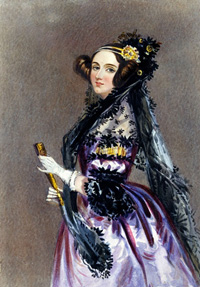
Ada Lovelace was a pioneering scientist and mathematician who has become known as the first computer programmer for her work on Charles Babbage’s Analytical Machine.
Born Augusta Ada Byron on December 10th, 1815, Ada Lovelace was the son of Lord Byron, the famous poet, and his aristocratic wife Annabella Milbanke Byron. Their marriage was far from happy and the two separated only two months after Ada’s birth. Lord Byron moved abroad, first to Italy, then to Greece, before dying of infection during the Greek War of Independence against the Ottomans when Ada was only eight years old.
Annabelle Byron was a distant and highly religious mother, leaving most of Ada’s childhood in the hands of servants. One thing she did insist on was a scientific and mathematic education for her daughter, partly because it was her passion, and partly because she felt it would prevent Ada from falling into the ‘insanity’ she thought Lord Byron had succumbed to.
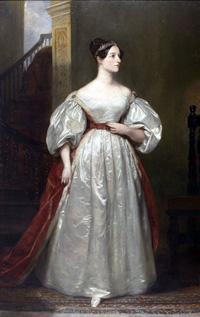
It was in 1833 that Ada’s life changed, as through her tutor and noted science educator Mary Somerville Ada was introduced to Charles Babbage, the man known as the inventor of the first computer. Babbage showed her and her mother a model of his Difference Engine, a steam or hand cranked device that was intended to make objective mathematical calculations by leaving human beings out of the process entirely. The idea of such a machine seems to have had a profound effect on Ada, although it would be almost ten years before she would revisit the topic.
During the 1830’s Ada was married to Baron William King, becoming Countess of Lovelace in the process. Lovelace’s fascination with maths only grew, and in 1943 she embarked upon the writing for which she is best known. In 1940 Babbage had given a seminar at the University of Turin that discussed his Analytical Engine. A young Italian Engineer named Lugui Menabrea transcribed the seminar in French, and a friend of Babbage’s named Charles Wheatstone commissioned Lovelace to translate the paper into English.
This Lovelace did over the course of a year, adding to the translation a series of her own notes. According to some sources the resultant article was over three times as long as the original, and Lovelace’s additions formed the major part of the overall work.
Lovelace’s fame comes from the seventh note she attached to the article, note G, in which she describes an algorithm for the Analytical Engine that would allow it to compute Bernoulli numbers. This is generally considered the first ever algorithm intended for use on a computing device and is the basis for the claim that Lovelace was the ‘first computer programmer’. Her work was well received within the scientific community, earning praise from eminent scientists including Michael Faraday. Babbage himself referred to her during this period with a title that has become her moniker, that of the ‘Enchantress of Number’.
The extent to which Babbage, who helped Lovelace with her translation and notes, had influence over the writing of note G is a subject of much scholarly dispute, with some scholars arguing that Lovelace’s contribution to the development of the Analytical Machine and related ideas was in fact minimal.
This being said, what almost all agree on is the visionary quality with which Lovelace viewed the possibilities of a machine such as the Analytical Engine. According to Computing Historian and Babbage Specialist Doron Swane:
‘Ada saw something that Babbage in some sense failed to see. In Babbage’s world his engines were bound by number…What Lovelace saw—was that number could represent entities other than quantity. So once you had a machine for manipulating numbers, if those numbers represented other things, letters, musical notes, then the machine could manipulate symbols of which number was one instance, according to rules. It is this fundamental transition from a machine which is a number cruncher to a machine for manipulating symbols according to rules that is the fundamental transition from calculation to computation—to general-purpose computation—and looking back from the present high ground of modern computing, if we are looking and sifting history for that transition, then that transition was made explicitly by Ada in that 1843 paper.’
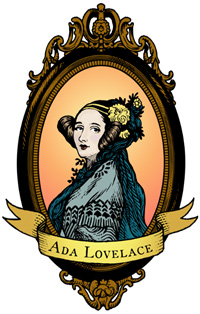
Lovelace died tragically young from uterine cancer, aged only 36. Her short life, combined no doubt with the issues she faced as a women in the 19th century, meant that beyond her translation she has left little work for future generations to discover. Still, her impact on science has been immortalised in Ada Lovelace Day, the second Tuesday of October, where the contributions of women to science, technology, engineering, and mathematics are honoured.
‘Understand well as I may, my comprehension can only be an infinitesimal fraction of all I want to understand’ – Ada Lovelace (1815-1852)
Nikola Tesla
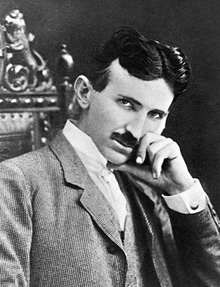
Nikola Tesla has long fascinated many scientists, historians and biographers due to his many contributions to scientific knowledge, as well as his unusual and eye-catching life story.
Born an ethnic Serb in the small village of Smiljan, in the then Austrian empire (now Croatia), Tesla was captivated by science from an early age. His lifelong fascination with electricity was kindled through his physics professor at his secondary school, whose demonstrations of electricity fascinated the young Tesla.
The most famous period of his life began after he emigrated to Paris to work for the Continental Edison Company, helping to install their new indoor lighting systems. Soon after this he emigrated once again, this time to the USA, to work in the Edison Machine Works. It is here that he met Edison for the first time, although exactly how well the two men knew each other is uncertain.
This period of work for a man who would become his main rival ended in a dispute, probably over unpaid bonuses Tesla felt he had earned. He left the Edison Company altogether at the end of the year, starting work on the project that made him a household name, the development of the Alternating Current (AC) induction motor.
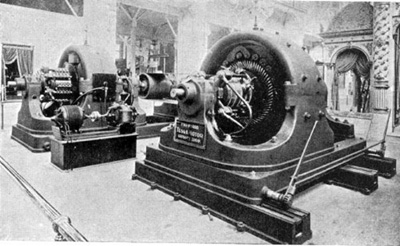
After falling foul of predatory business partners when setting up his first company, Tesla Electric Light and Manufacturing, Tesla was able to develop the first AC induction motor in 1887 thanks to the funding of Western Union superintendent Alfred S. Brown and New York attorney Charles F. Peck.
Tesla’s motor was unique due to its use of a polyphase current to create a rotating magnetic field, the rotations of which then turn the motor. The rotating magnetic field removed the need for commuters to reverse the current direction within the motor, thereby preventing sparking and reducing maintenance costs when compared to other motors at the time.
This invention drew the attention of one of the major figures in the electrical business at the time, George Westinghouse of the Westinghouse Electric & Manufacturing Company. Westinghouse needed an AC motor to power the AC Current system his company had developed, and in May 1888 Brown and Peck brokered a deal that transferred Tesla’s polyphase induction motor and transformers designs to Westinghouse.
This deal, along with Tesla’s subsequent licencing of his AC patents, made him a wealthy man, and for a while he was able to pursue his own interests. One of these was his second most famous invention, the Tesla coil. Tesla got the idea when attempting to use an induction coil transformer as part of an arc lighting experiment he was performing, but the current required melted the iron insulation between the windings within the coil.
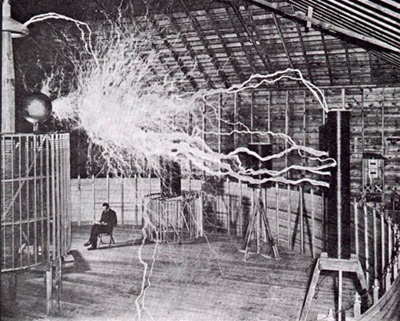
Tesla fixed this problem with his own coil, which used air instead of iron to insulate the windings, allowing his coil to withstand much higher currents and temperatures than other transformer coils available at the time. In 1891 Tesla patented this design, and it went on to have a huge impact in radio technology in the early 20th century.
Tesla would go on to experiment with X-rays, wireless communication, radio remote control, wireless power systems, and more during the next few decades. His Colorado Springs experiments became famous for the iconic pictures of Tesla surrounded by arcs of electricity, while his showmanship went so far as to demonstrate a radio remote controlled boat to a crowd in Madison Square Garden.
Sadly, Tesla’s prosperity would not last forever, as he began to have mounting financial troubles in the 1900’s. These were mainly caused by the collapse of the Wardenclyffe tower project in 1906 that Tesla had hoped would provide transatlantic wireless communication. His lodgings became more modest, his patents ran out and by 1915 he was essentially bankrupt. He began living in hotels around New York, leaving a string of unpaid bills in his wake.
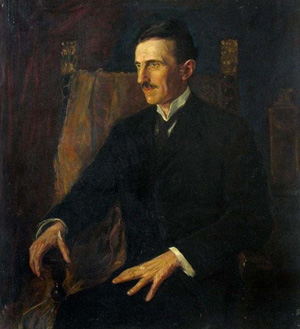
He was helped in 1934 by his former employers at Westinghouse, who paid his hotel rooms from then on along with a $125 ‘consulting fee’, as Tesla was known to be too proud to accept charity. He died alone in his New Yorker Hotel room on January 1943, at the age of 86.
Tesla was relatively unknown for the first few decades after his death, since many of his innovations had by the mid 1900’s been overshadowed by later celebrity scientists such as Einstein. He received a boost in reputation at the General Conference on Weights and Measures in 1960, after the SI unit of magnetic flux density was named the tesla in his honour. In 1975 The Institute of Electrical and Electronics Engineers (IEEE) created the Nikola Tesla Award for ‘outstanding contributions to the generation and utilization of electric power’, furthering his standing within the scientific community.
Today Tesla is one of the best known scientists of the early 20th century, his fame boosted significantly through the use of his name by companies such as the electric car manufacturer ‘Tesla, Inc’. His innovations in the field of electric motors were essential to the development of modern electrical power systems, and he remains one of the best known, and most important, scientists of the last century.
“Let the future tell the truth, and evaluate each one according to his work and accomplishments. The present is theirs; the future, for which I have really worked, is mine” – Nikola Tesla (1856 – 1943)
Michael Faraday
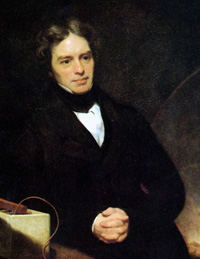
We are proud to announce the first profile in our #OnTheShouldersOfGiants series, in recognition of those historical inventors, scientists and engineers that make Smart-e’s innovations in the AV industry possible. Our first profile is physicist, chemist and titan of the 19th century Michael Faraday (22 September 1791 – 25 August 1867).
The fourth son of a northern blacksmith, Faraday grew up in Newton, Surrey after his father moved south to find work. The family lived in poverty due to his father’s frequent illnesses which prevented him from working steady jobs. Aged 14 Faraday became apprenticed to a bookbinder, and despite having only had a rudimentary education he soon became fascinated by some of the books he was allowed to read. After reading the chapter on electricity in the 3rd edition of the Encyclopaedia Britannica he was inspired, and built a primitive battery with which he conducted basic electrical experiments.
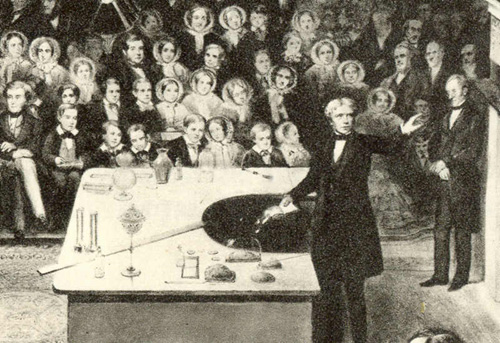
When Faraday was offered a ticket to attend the lectures being given by Sir Humphry Davy at the Royal Institution he jumped at the chance, and afterwards bound the notes he had taken during the lecture and sent them to Davy with a letter asking for employment. Davy had no current spaces available, but after one of his assistants was dismissed for brawling he remembered Faraday’s letter and offered him the job.
Thus began the scientific career of Michael Faraday, one that led to some of the most important scientific discoveries of the Victorian Age. While Faraday is probably best known for inventing the first electric motor and the first electric dynamo, he was also the first person to produce an electric current from a magnetic field, the discoverer of the effects of magnetism on light, and the creator of the first known compounds of carbon and chlorine, among many other significant discoveries.
Faraday was rewarded for his pioneering work with a knighthood (which he declined) and the position as the first Fullerian Professor of Chemistry at the Royal Institution. By the time of his death in 1867 Faraday was already seen as a giant within the sciences, and his reputation only grew as the usefulness of electricity became more apparent. Before his death he had been offered a grave spot in Westminster Abbey, he refused and was buried instead in Highgate Cemetery. A memorial plaque to him exists within Westminster Abbey, not far from the tomb of Isaac Newton.
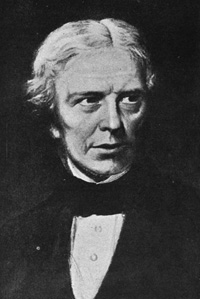
Faraday’s legacy cannot be overstated, he remains one of the most recognisable scientists of all time, and one whose discoveries and inventions are still important today. His life story as a child born into poverty who became one of the intellectual titans of his era is inspirational, and gives his legacy a poignancy that many of his contemporaries lack in comparison.
Albert Einstein famously had a picture of him on his wall alongside Isaac Newton and James Clark Maxwell, and his legacy has continued to encourage generations of budding scientists over 150 years after his death.
‘The philosopher should be a man willing to listen to every suggestion, but determined to judge for himself. He should not be a respector of persons, but of things. Truth should be his primary object.’ – Michael Faraday (1791-1867)